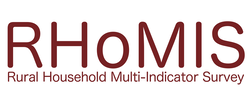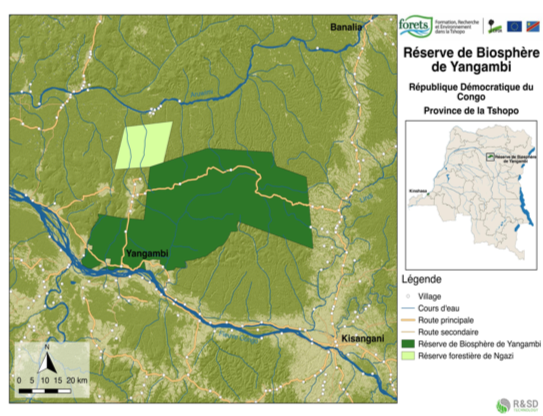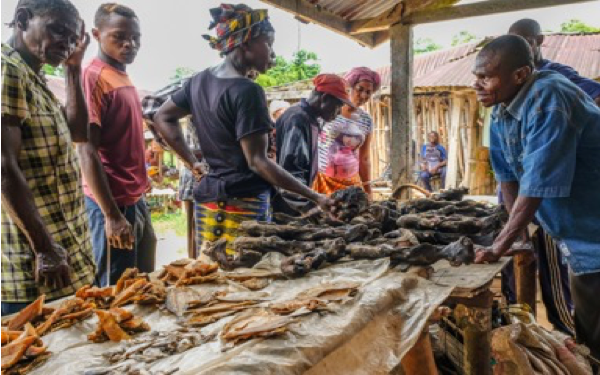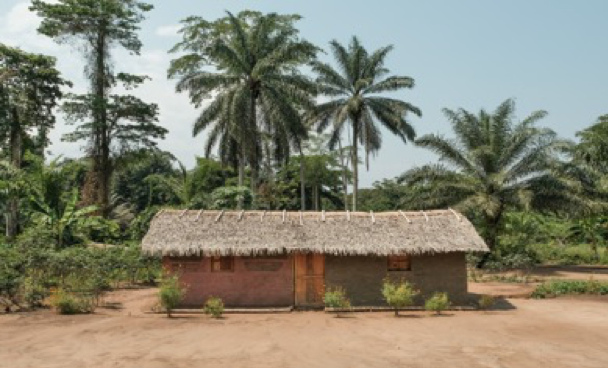It is an established best practice for development organisations to conduct benchmarking research (also known as a ‘situation analysis’ or ‘baseline survey’) before initiating a project or other development intervention. This paves the road to sound planning of activities, to monitoring and evaluating the effects of projects and programmes, and to carry out adaptive programming. RHoMIS is now a proven tool for such benchmarking assessments. In this article, we report on how our partners used the RHoMIS survey to conduct a situational analysis in order to facilitate the identification and planning of locally-relevant development investments. For this situation analysis, the research took place in the Yangambi Biosphere Reserve (YBR) in the Democratic Republic of Congo. It was carried out as part of the project Formation, Recherche et Environment dans la TShopo (FORETS) funded by the European Union and implemented by the CGIAR Research Programme on Forests, Trees and Agroforestry (CIFOR) in collaboration with local and international partners. Through research, development and capacity-building activities, the FORETS project offers policy makers, donors and communities the tools to better understand the contribution of forests to the economy, health and well-being of local communities, and regional biodiversity. Location of the Yangambi Biosphere Reserve. The RHoMIS survey was chosen to help identify entry points to create wealth, improve nutrition and conserve forest resources in the intervention area. The survey was conducted over ten days in December 2017, interviewing 413 households situated around the Yangambi Biosphere Reserve in the central-north region of DRC. The core RHoMIS questionnaire was adapted to capture additional project-specific information needs, such as data on forest resources and household wealth. Six themes were highlighted in the analysis, as follows. Summaries and discussions of the survey results in YBR are also available online in English and French. Household demographics and decision making The survey established that households in Yangambi are large, with each consisting of five to seven persons. This confirmed similar trends at the national and regional level. By contrast, these households were found to be more educated compared to average Congolese education levels. Yangambi households are led by relatively young persons, with 50% of household heads less than 50 years old. The survey also reported on gender dynamics, finding that “women and men have almost equal power of decision-making over income and food stuff”. Farming systems The data pointed to Yangambi households practicing “mixed, subsistence farming on small plots”, with a typical household cultivating between 2 and 4 ha. Slash-and-burn land management was common amongst the households, but the use of nitrogen-fixing legumes was not. The use of fertilizers or pesticides was also found to be uncommon. Only 2% of households used manure as fertilizer. Land ownership in this area is dominated by customary rights and there is a lack of tenure security. More than 60% of the households around Yangambi use family land. Only 30% reported using their own land. Agroforestry, a system that is likely to be of great value to the area, was uncommon, with only about one third of farmers growing trees on their farms. Most farmers instead focused on starch and cereal crops, such as cassava, maize, rice and sweet banana. Common livestock included chickens, goats and pigs.
Food insecurity and coping strategies For many families in Yangambi, food shortages were common, mainly occurring between January and March and affecting over two-thirds of households. Asked how they cope with these shortages, families answered that the number of meals or size of portions would decrease, or that they would rely on external assistance of food or money. Diet intake and diversity The survey revealed that households in Yangambi have significantly high potential for chronic and acute malnutrition. 61% of households reported “insufficient food availability to meet 2,000 calories per day”. While the lean period of the year was the dry season of January, February and March, during the rest of the year there was a generally high diet diversity. There is regular consumption of cereals, tubers, vegetables, fruit, meat and milk. Respondents reported eating sweets daily. Only the food groups not grown in the area (milk and oils) were uncommon in people's diets. Food crops are the basis of the average Yangambi diet, representing 70-80% of calorie sources in most households. For the wealthier households, this was closer to 40%, with the remaining calories obtained through meat or purchased food. For all households, bushmeat was a common strategy for increasing protein consumption. Household wealth and wellbeing Although there were varying financial situations, it was clear that financial hardship was pervasive, with 99% of households living below the poverty line. Nearly all families received some form of cash income, most commonly from selling crops. There was a direct correlation between income diversity and wealth. Better-off families had income from off-farm employment or were engaged in livestock farming.
The six themes outlined above give an indication of how RHoMIS can provide a comprehensive situation analysis of rural households. RHoMIS is able to generate this sort of rich data in a relatively short time period at the fraction of the cost of more arduous surveys. Furthermore, the anonymised data from this survey is contributing to the global RHoMIS publicly-available dataset to further the efforts of research for development.
Development Opportunities The situational analysis of rural livelihoods systems around the Yangambi reserve highlighted three clear development opportunities. The first opportunity is agroecological intensification and improvement of yields through increasing soil fertility, weed management and better management of pests and disease. The improvement of the current agricultural system is essential, as agriculture accounts for up to 90% of the value of activities. The second opportunity is for investment in agroforestry. This has the potential to improve nutrients and diet diversity, increase income, as well as take care of the natural environment. We know that the forest resources, which are critical for mitigating people’s food and income vulnerability, are becoming increasingly scarce and threatened by expansion of the agricultural frontier. Finally, there is a significant opportunity to develop agriculture value chains with Yangambi farmers. As the brief reports, "communities around Yangambi are isolated and poorly connected to markets. Most transportation happens on rivers and farmers have a hard time selling farm products or carrying out off-farm activities." Farmers had started growing cocoa in response to rumours of a new cocoa market and this was something that could be developed further. In conclusion, the example from the Yangambi area shows the usefulness of RHoMIS in generating a comprehensive situation analysis of rural households and in identifying entry points for integrated development, such as improved health and nutrition and forest resource conservation. Ultimately, the data generated in the situation analysis gives development actors the insights needed to provide a localized framework for development action.
1 Comment
Your comment will be posted after it is approved.
Leave a Reply. |
RHoMIS BlogThe RHoMIS blog is written by a community of practice. The COP is made up of RHoMIS users and creators from across the world. Here we share their stories of how RHoMIS is helping to record and analyse household data. Archives
May 2020
Categories
All
|





 RSS Feed
RSS Feed